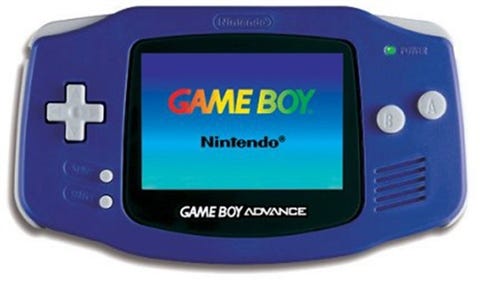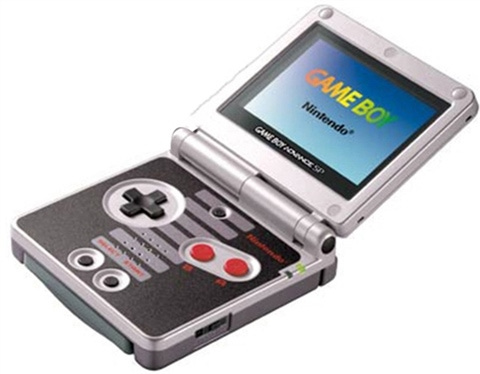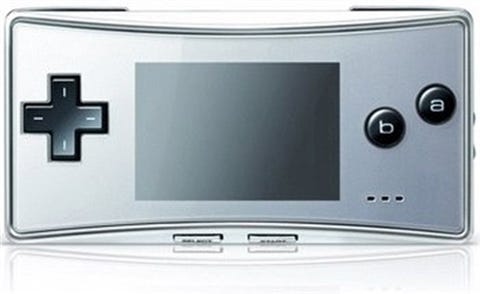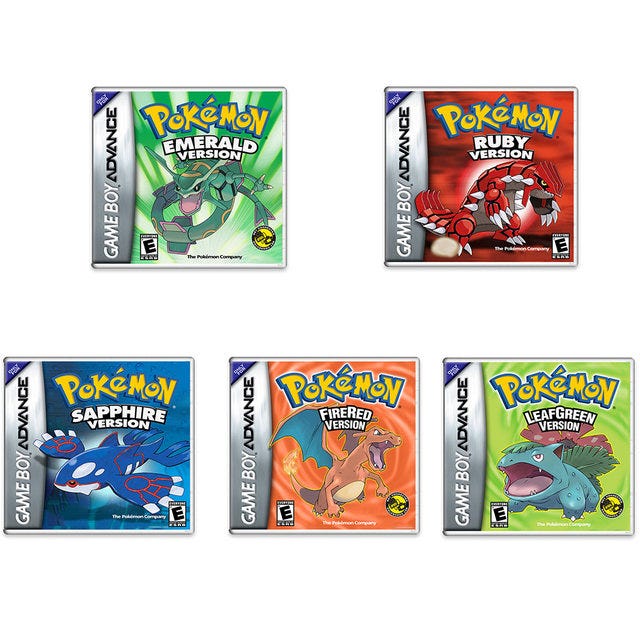The Nintendo Lineage 6: Gameboy Advance Family
Alex, I know you're reading this, it's not 4000 words long but the Gameboy Micro review is in here
The Gameboy Advance is a console with strong nostalgic value for me; I know I prattle on a lot about things being my first or my last or my x ranked video game (and believe me, these are lists that I do keep and curate in my own time) but I have to say it once again: the Gamecube was my first home console, however, my Gameboy Advance was my first gaming device altogether. With so much of my childhood collection gone with my move to the big city, I’m very proud to say that I still have that original console today.
But enough about my Early Life section, it’s time we get to the hardware. I’ll be reviewing the Gameboy Advance based on my usual criteria and the scores I give will be judged as an average across all models of the handheld.
HARDWARE: *** 3 Stars
The Gameboy Advance, from a hardware perspective is unfortunately let down by a terrible base model and a few absolutely baffling omissions from its later variants too.
The original Gameboy Advance, commits the unforgiveable sin, yet again, of having no backlight. This device launched almost a decade after the backlit Sega Game Gear and 3 years after the Japan-exclusive Gameboy Light model, at this point there was absolutely zero excuse and this fatal error ruins the entire console for me. It’s a smaller issue too but the thing still ran on batteries which are prone to leakage when exposed to damage and long storage, it’s also just a bit of a pain in the ass to swap out batteries instead of having a rechargeable pack within the device.
The Gameboy Advance SP: probably the most iconic model and the one I and everyone else I knew as a kid owned, fixes the battery and screen issue while cruelly taking away the ability to use headphones; my child self got into trouble on plenty-a-school night as a result.
At last, we come to the Gameboy Micro which is my favourite model of Gameboy Advance. This little guy sounds horrible on paper: it has tiny little speakers, a screen about the size of your thumb from the joint upwards, doesn’t play original Gameboy games and presents some tactile challenges with its stunted stature, however, it also has the best screen quality of the family, swappable face plates, surprisingly great audio quality and some really nice features like multi-stage adjustable brightness and the return of the headphone jack. I have to be honest though, I like it the most because I love the silver-blob, Y2K look of the device and the buttons feel so good to use, they are also in lower-case which is a cute detail I really enjoy.
I also want to take a quick moment to praise the power of the Gameboy Advance. While it wasn’t quite as capable as the SNES, its graphics have their own flavour of 16bit which arguably looks better than that console.
Overall? A clear improvement on its predecessor but let down by feature inconsistencies.
SOFTWARE: **** 4 Stars
I understand that 4 stars might seem like a disproportionately high score for the Gameboy Advance: a console whose library was dominated by second-rate SNES ports and remakes but let me explain.
Firstly, given their importance to Nintendo’s handhelds, I am inclined to tie my opinion on each generation of Pokémon quite tightly to the overall quality of the Nintendo handheld libraries and the Gameboy Advance just so happens to be home to my favourite Pokémon game: Emerald. Although they are technically remakes, the gulf in quality between Pokémon Blue and Red on the original Gameboy and Fire Red and Leaf Green on the Advance makes those original games practically obsolete save for historical interest.
Setting aside the Pokémon games, when developers for the Gameboy Advance were brave enough to crawl out from under the SNES’ shadow they were often able to produce brilliance. The Sonic Advance series for a while was really the last bastion of anything good coming out of that franchise, the GBA received some excellent Spyro games too, the Minish Cap is a highly regarded 2D Zelda and the Advance is also home to some cult-classic ports of popular console games like Splinter Cell and Max Payne.
IMPACT: ** 2 Stars
I can’t think of a single video game console with stronger Middle Child Syndrome than the Gameboy Advance.
Even among the generation who grew up with this thing: mine, I feel as if this handheld rarely gets a mention; it’s not that iconic slice of the 80’s and 90’s like the original Gameboy, neither is it that little clamshell that even your grandparents had: the DS, the Advance is just a Gameboy but better and that’s all it needed to be.
This lack of a defining identity extends to the library as well. I mentioned already that the Gameboy Advance has a lot of SNES ports but another reason I don’t think it’s a particularly noteworthy system today is that its games just aren’t anybody’s favourites. Pokémon Emerald is my favourite in the series, but I’ve come to learn these days that Pokémon Platinum and Pokémon Black and White: DS entries, are generally considered to be the best. The Gameboy Advance might have the cream of 16-bit Mario but the Nintendo DS has the superior Mario Kart game and unlike the Super Mario Advance series, Super Mario 64 DS, in my opinion, is different enough to warrant a purchase today.
SENTIMENT: *** 3 Stars
The Gameboy Advance is a console I really enjoy compared to its predecessor but compared to the DS? I don’t think there’s much reason to buy one today.
The DS runs Gameboy Advance games on a larger, backlit screen natively, not through emulation, it also plays its own library of great games and while some of the better models of Advance can set you back £100-150, the best model of DS: the DS Lite can commonly be found cheaper than £40 and with games included; the Gameboy Advance is a handheld I own for nostalgia and authenticity but for the modern gamer, it offers little incentive.
There are some consoles where I feel you really had to be there back in the day to get the full experience and the Gameboy Advance is one of them. Before half the planet had a Wii under the family TV and a Nintendo DS Lite, this was the handheld and not everyone at school had one unlike it successor, so when we were living under the oppressive reign of the PS2 and a fellow rebel whipped out their Gameboy Advance after class, you knew you’d found good company.
FINAL SCORE: 12/20
Slowly but surely, we are coming to the end of this series; I’m planning to make 4 more parts not including this one, for a total of 10 overall. Over the weeks I have been writing The Nintendo Lineage, it has become clear from my analytics that, despite a few other posts that hit a wider audience than usual, this is what most of my readers are here to see.
I’ve become very accustomed to this alternating 3 day, main series plus side-article writing rhythm so this is how I will run the Substack going forward. As well as that, I have decided that the next series, which will begin in June, will be titled ‘The Xbox Legacy’ and will follow a very similar format.
I hope you’ll join me for that too.








Yusss! You wrote it. Great stuff! Such an underrated gem. I must look through my junk to find mine.
Advance Wars 1 and 2 alone could put the GBA's software library in the top 5 of all time.